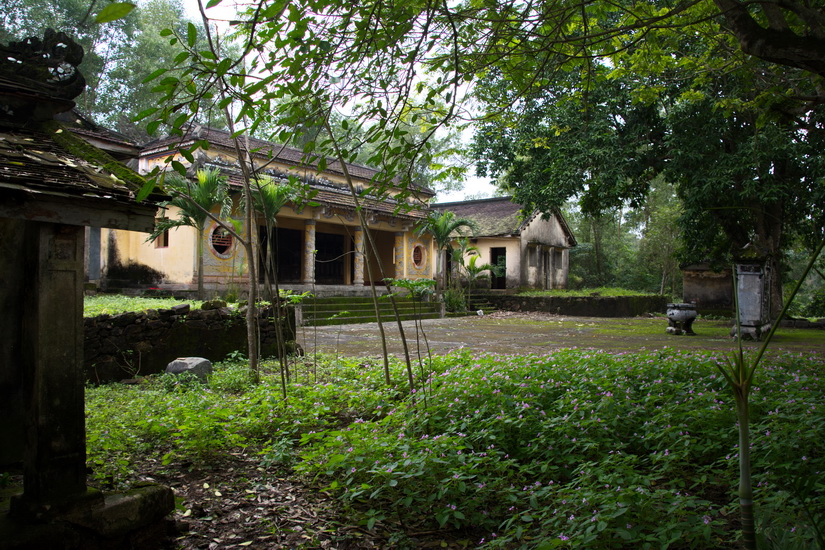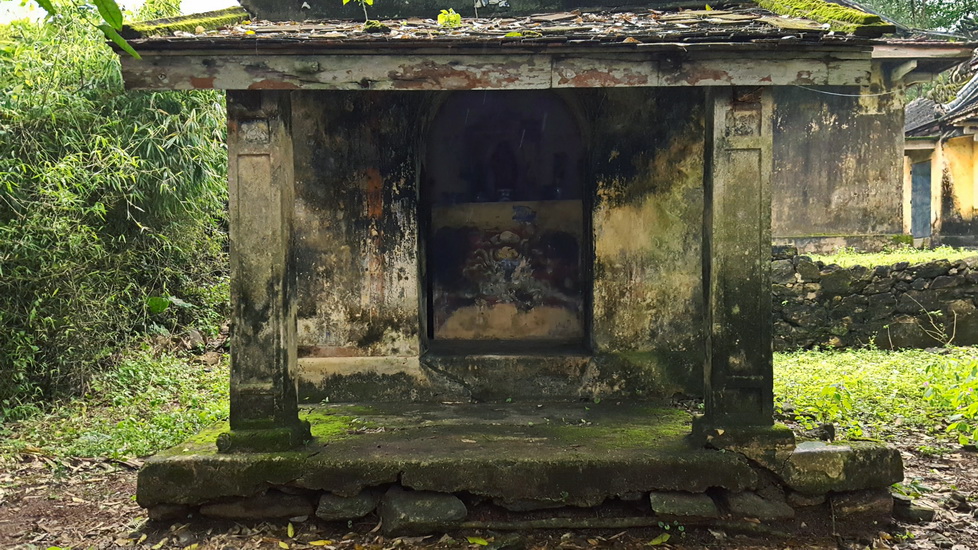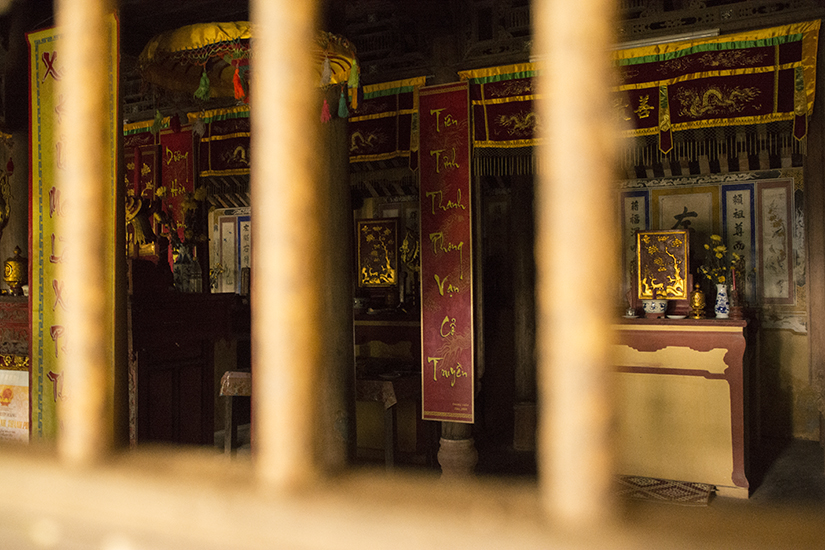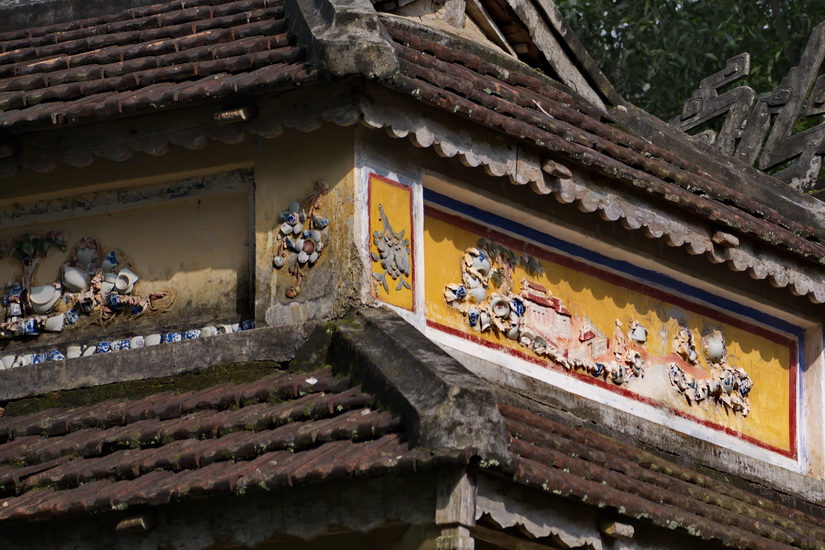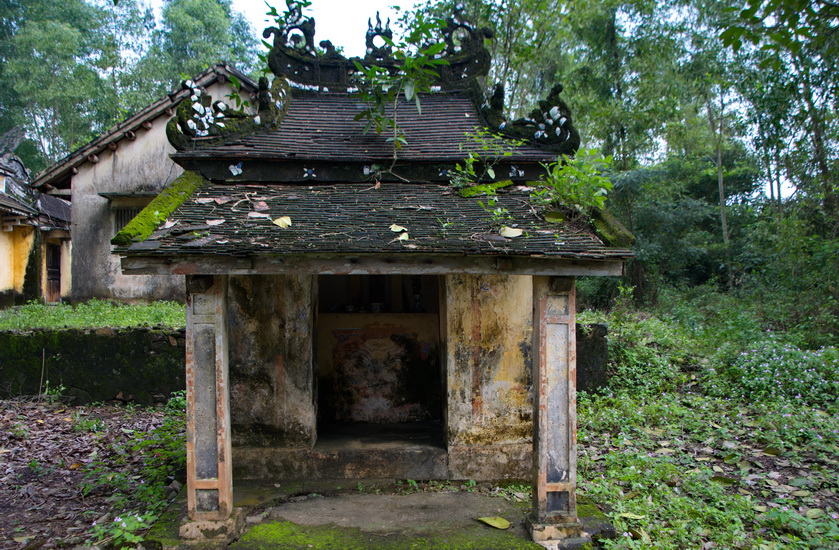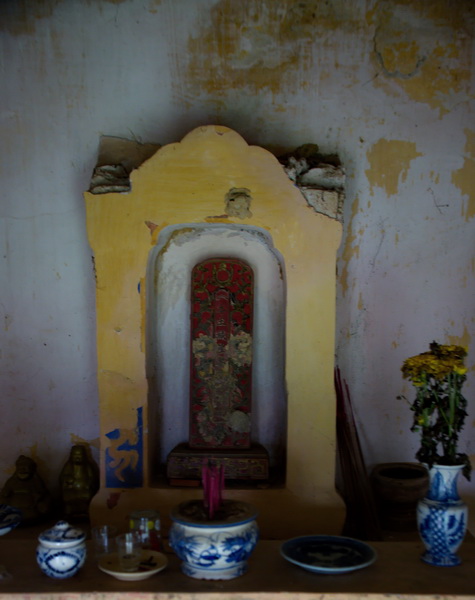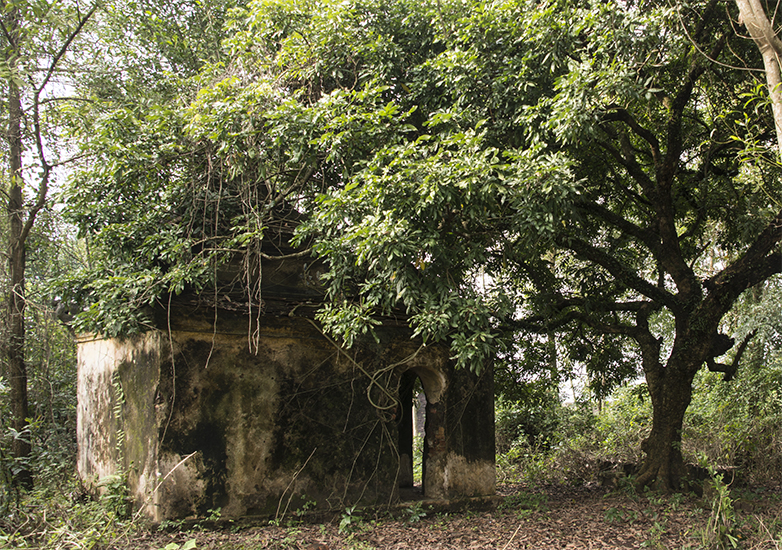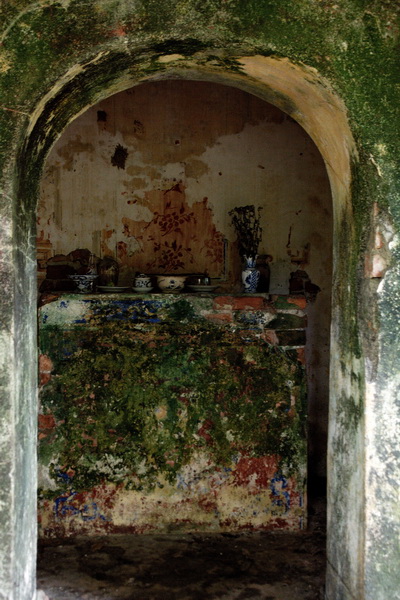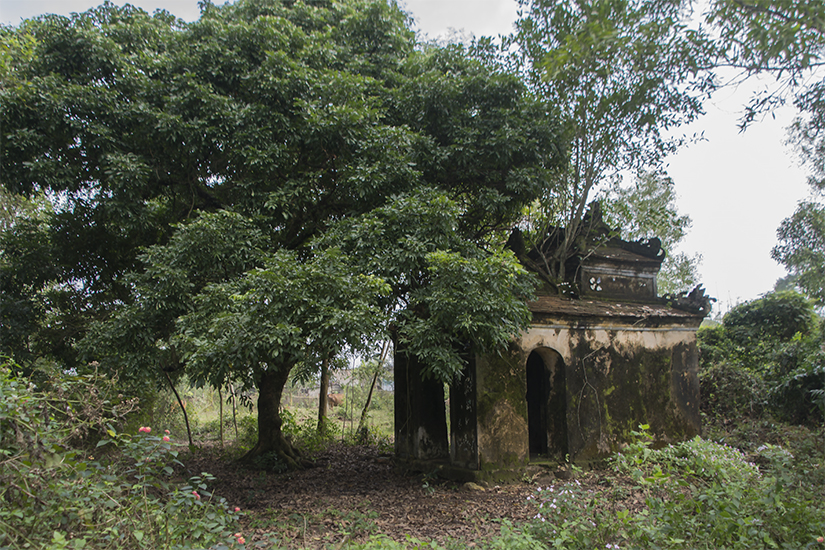|
Chua
Ðình Làng Duong Xuân |
|
|
|
KoreaMosaic
Home
Photos
Home
Countries
Vietnam
Hue 2018
Traditional Hue 2018
Ho Chi Minh City
2018 |
All
photos on this page
© John Holstein 2018 |
| |
| |
| |
|
| |
Ðình Làng
Thuy Xuân is the name that a neighborhood denizen informed me
when I asked. (I can't read Vietnam-Chinese characters.) But when I
looked for it later on an Internet map, in the exact location that I
remembered it to be is Ðình Làng Duong Xuân.
It is about 30 minutes' walk southwest of Chua Bao Quoc; this temple
is an oasis of one square kilometer bordering a new housing development
that has the aesthetic nature of a real estate developer with more important
things on his mind.
(NEWS
FLASH: upon further investigation I discovered that Ding Lang, which
I thought is part of the name of the temple, means village, and Duong
Xuan is the name of the village. So the person I asked must have thought
that I was asking the name of her village.)
|
| |
| |
| |
| |
|
| |
There
is another shrine like this at the other corner of the compound. You'll
see the photo a bit later. |
| |
| |
| |
| |
|
| |
| Inside the small
shrine in the photo above. The absence of people and the untended nature
of the entire compound of the temple lead one to think that the temple has
been deserted for many years . . . |
| |
| |
| |
| |
|
| |
. . . but
there is one view--through the barred doors of the main prayer hall--that
hints at the contrary. The furniture and art all seem clean and well-cared
for. |
| |
| |
| |
| |
|
| |
More
mosaic bas-relief of ceramic tiles, porcelain pottery shards and broken
bottle glass. |
| |
| |
| |
| |
|
| |
The
partner to the shrine across the compound. The next photo shows you the
altar inside. |
| |
| |
| |
| |
|
| |
The
flowers in the vase tell us that someone has been here. But they're dead.
So what can this be telling us about the status of this temple? |
| |
| |
| |
| |
|
| |
There
is a shaded knoll in back of the main prayer hall, and on the hill I came
across another building. On the right, by the door, is a small chamber
housing an altar (see the next photo). |
| |
| |
| |
| |
|
| |
The
chamber and its altar. |
| |
| |
| |
| |
|
| |
The
shrine from another angle. |
| |
| |
| |
| |
|
| |
And
yet another. Note the disappearing mosaic bas-relief on the right. |
| |
|
| |
